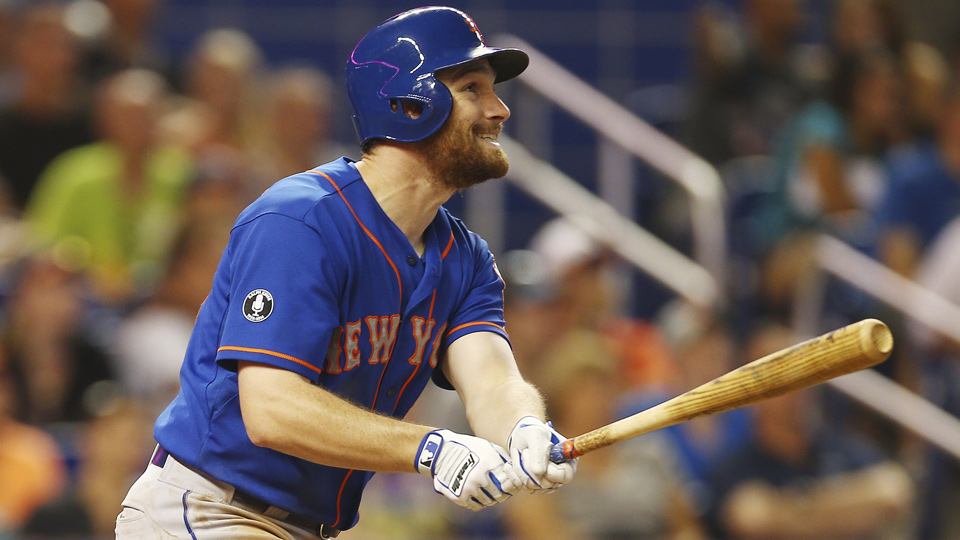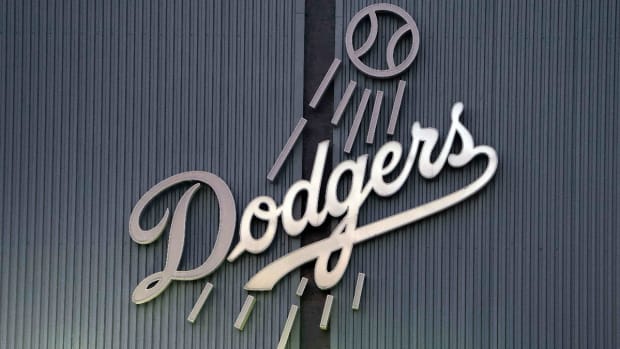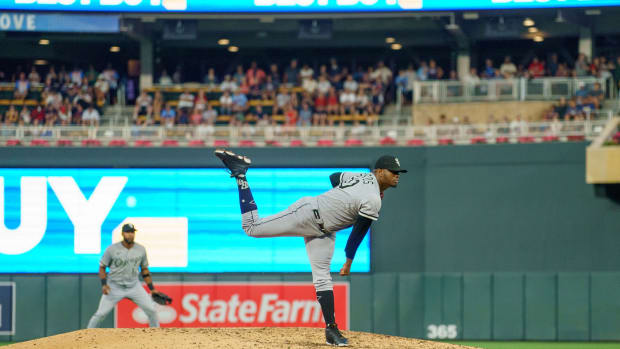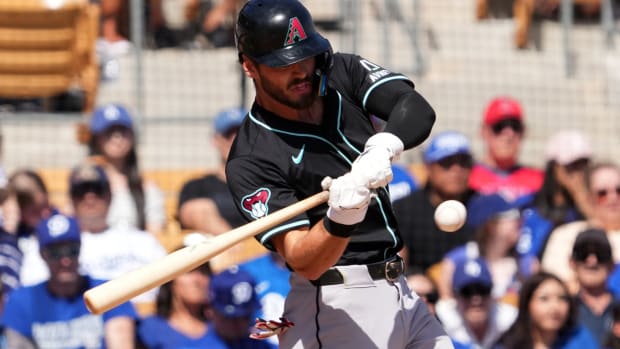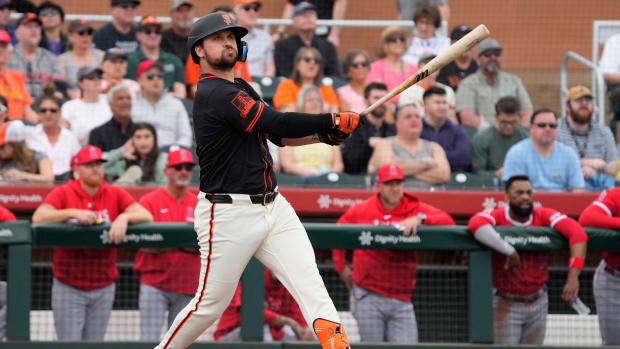Which infielders could be on the move ahead of MLB trade deadline?
We wrap our look at the top trade targets around the league this week with a trip around the infield and the top targets at second, third, short, and catcher, taken below position-by-position. One re-occurring theme below is a discrepancy between the level of interest in a player around the league and his team’s desire to trade him. That shouldn’t come as a huge surprise: The more valuable players are the ones that are more difficult to part with. But with the deadline now less than a week away, one wonders to what degree a team’s professed desire to hang on to its most desirable trade chip is merely a negotiating tactic.
Previously: Starting pitchers, relief pitchers, outfielders
Daniel Murphy, 2B, Mets
The Rays’ success on the field (seven-game winning streak and 4 1/2 games out of the wild card) may be taking Ben Zobrist and Yunel Escobar (not to mention David Price) off the trading block. But another team seeing some recent success, the Mets, would do well to listen to what is reportedly significant interest in their own All-Star middle infielder in Murphy.
The Mets have gone 11-6 since July 4 and have a positive run differential on the season, but they are still seven games out of the second National League wild-card spot and 8 1/2 games out in the NL East. Murphy, meanwhile, is a poor defensive second baseman who is a good but unexceptional hitter (.287/.327/.408, 106 OPS+ over the last three years). He’ll also be 30 next year, a free agent next fall and coming off a $5.7 million salary and an All-Star selection this year. Heading into his final year of arbitration, Murphy is about to become quite expensive. To a contender in need of help at second base, such as the Giants, Athletics or Yankees, however, Murphy would be a major get.
Aaron Hill, 2B, Diamondbacks
With their two veteran infielders signed through 2016 and having down years, the Diamondbacks are apparently far more interested in trading the older and less versatile Hill than the 30-year-old Martin Prado. Hill is owed $24 million for the next two years plus what’s left of his $11 million salary for this year (roughly $3.7 million). That’s a lot of scratch for a 32-year-old with a .285 on-base percentage who is nothing special in the field. However, the last time Hill was traded mid-season, he went from posting a 58 OPS+ with the Blue Jays to a 137 OPS+ for the Diamondbacks over the season’s final 33 games. Even with his poor 2014 included, he has hit .287/.343/.470 (119 OPS+) over parts of the last four years for Arizona.
Stephen Drew, SS, Red Sox
Drew has gone 0-for-5 since I pointed out on Tuesday night that his bat is heating up, but he did draw a pair of walks amid that 0-fer, a continuation of the impressive patience and power he has shown this month. Even with a measly .204 batting average (due in large part to an unlucky .207 average on balls in play), Drew has a .350 on-base percentage and .510 slugging percentage on the month for an .860 OPS in 60 plate appearances. Here are the shortstops with a higher OPS in 50 or more PA this July: Jhonny Peralta (.900) and Ian Desmond (.966). That’s it.
Drew is on a one-year deal, and the Red Sox, who haven’t had a winning record in any month this season, just lost three in a row to the Blue Jays to sink back to 9 1/2 games out in their division. The rumor mill has been quiet regarding the slick-fielding Drew, but teams in need of shortstop help, such as the Pirates, Mariners and Brewers, would do well to change that immediately.
Casey McGehee, 3B, Marlins
McGehee may be the most perfect trade candidate in baseball. After establishing himself as a major leaguer in his late twenties with two solid seasons at third base for the Brewers in 2009 and 2010, McGehee hit .221/.282/.351 in 952 plate appearances in 2011 and 2012 and had to go to Japan to find work in 2013. Playing third base for MasahiroTanaka’sRakuten Golden Eagles, McGehee had an impressive year hitting Nippon Professional Baseball’s new juiced-up ball, and in December, landed a one-year, $1.1 million deal to play third base for the Marlins. McGehee’s power (he hit 28 home runs and slugged .515 in Japan) didn’t translate back to the States, but he has nonetheless been valuable, hitting .312/.380/.387 (113 OPS+) while playing solid defense. He was even a Final Vote candidate for the All-Star Game, losing out to the far more deserving Anthony Rizzo.
The 31-year-old McGehee was a scratch-off ticket that paid off, and now the Marlins, who are a half-game ahead of the Mets in the standings, can cash him in at the Kwik-E-Mart that is the trading deadline, where teams pick up items they forgot to pack for their trip to the postseason. Teams are asking about him, but McGehee has one year of arbitration left before becoming a free agent again and the Marlins say they want to keep him. That’s crazy talk. McGehee’s value will likely never be higher. Here’s hoping they’re just playing hard-to-get.
Kurt Suzuki, C, Twins
The Twins and Suzuki have been talking extension this past week, and the timing of those talks would seem to indicate that if a deal is not struck in the next few days, the Twins will opt to trade him instead. Suzuki is 30, will be a free agent this fall and is in the midst of his finest offensive season, hitting .308/.367/.393 (113 OPS+) and netting his first All-Star selection. Per local ESPN reporter Darren Wolfson, Suzuki, who is making $2.75 million this year, is seeking an annual salary comparable to those that Jarrod Saltalamacchia and Carlos Ruiz received on their three-year deals this past offseason ($7 and $8.67 million, respectively). Given Suzuki’s potential to regress at the plate and his poor pitch-framing, committing that kind of money to a 30-year-old catcher having a career year seems far less wise than selling high on him.
Then again, the Twins could do both, trading Suzuki now, then signing him back in the offseason. Suzuki is no stranger to mid-season trades, having been dealt in August of each of the last two seasons when his stock was much lower. Nor is he a stranger to reunions, as the first of those trades sent him away from the A’s and the second brought him back.






























